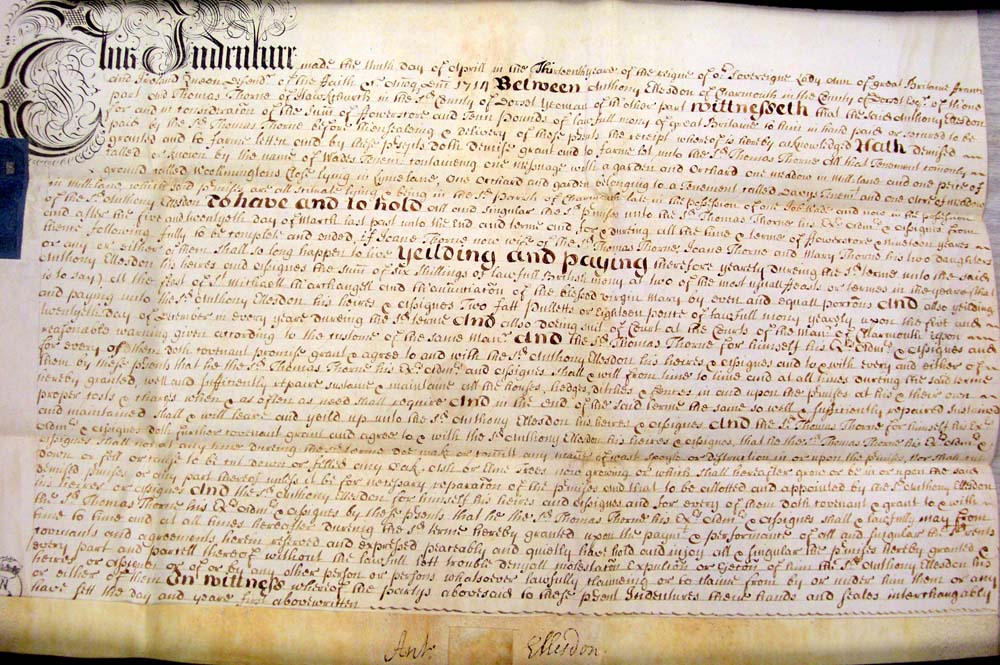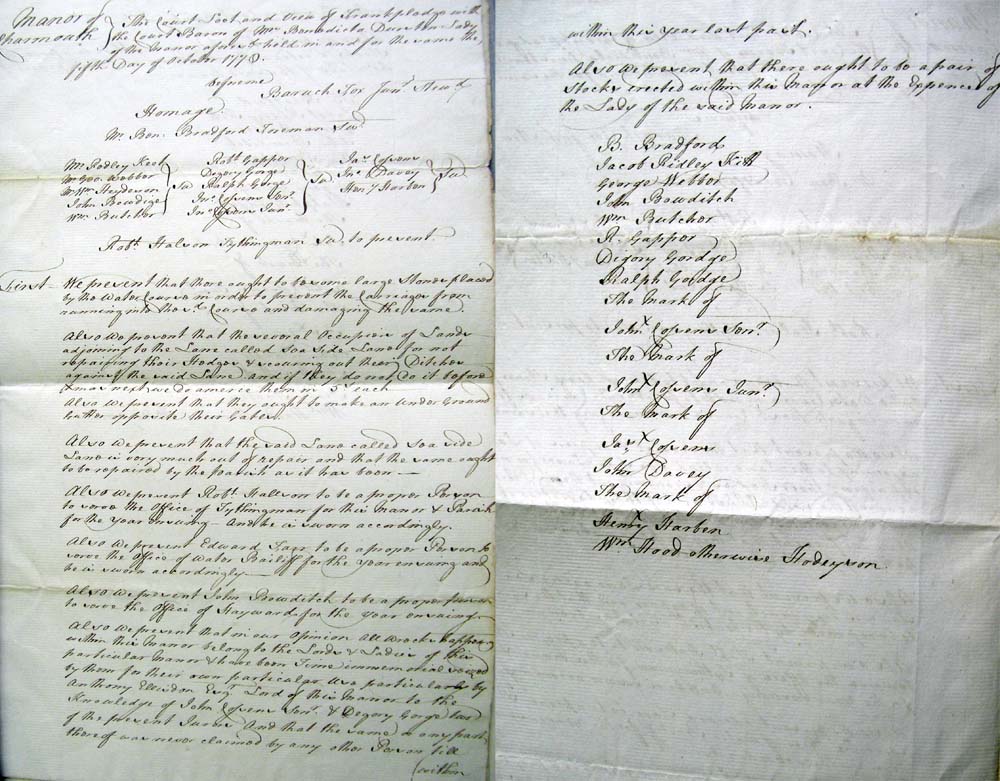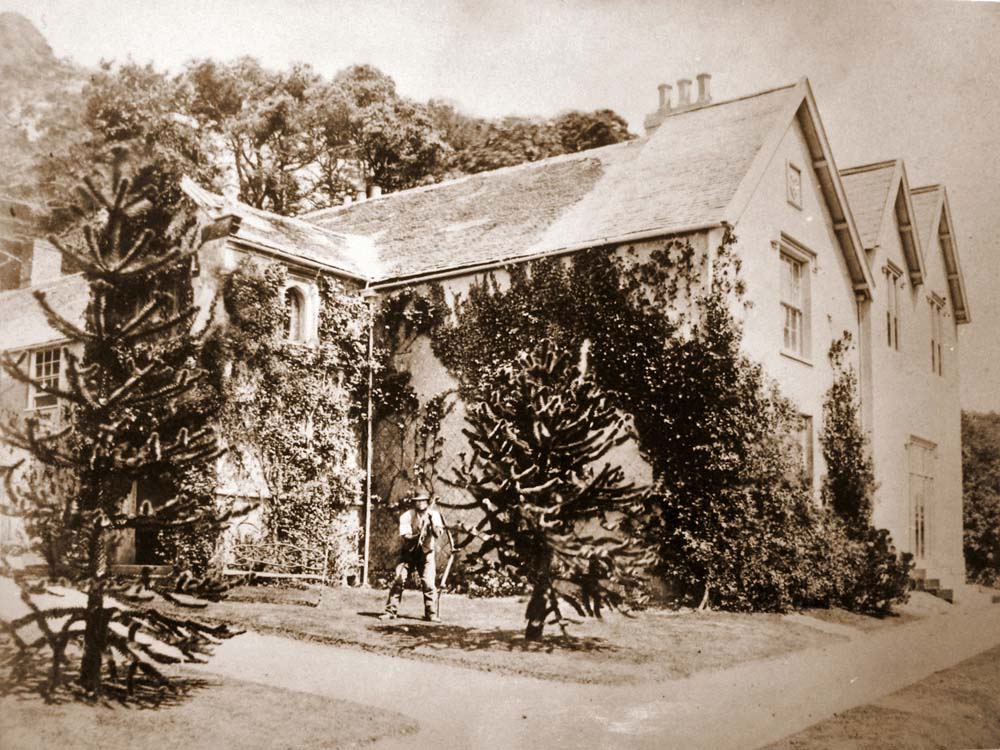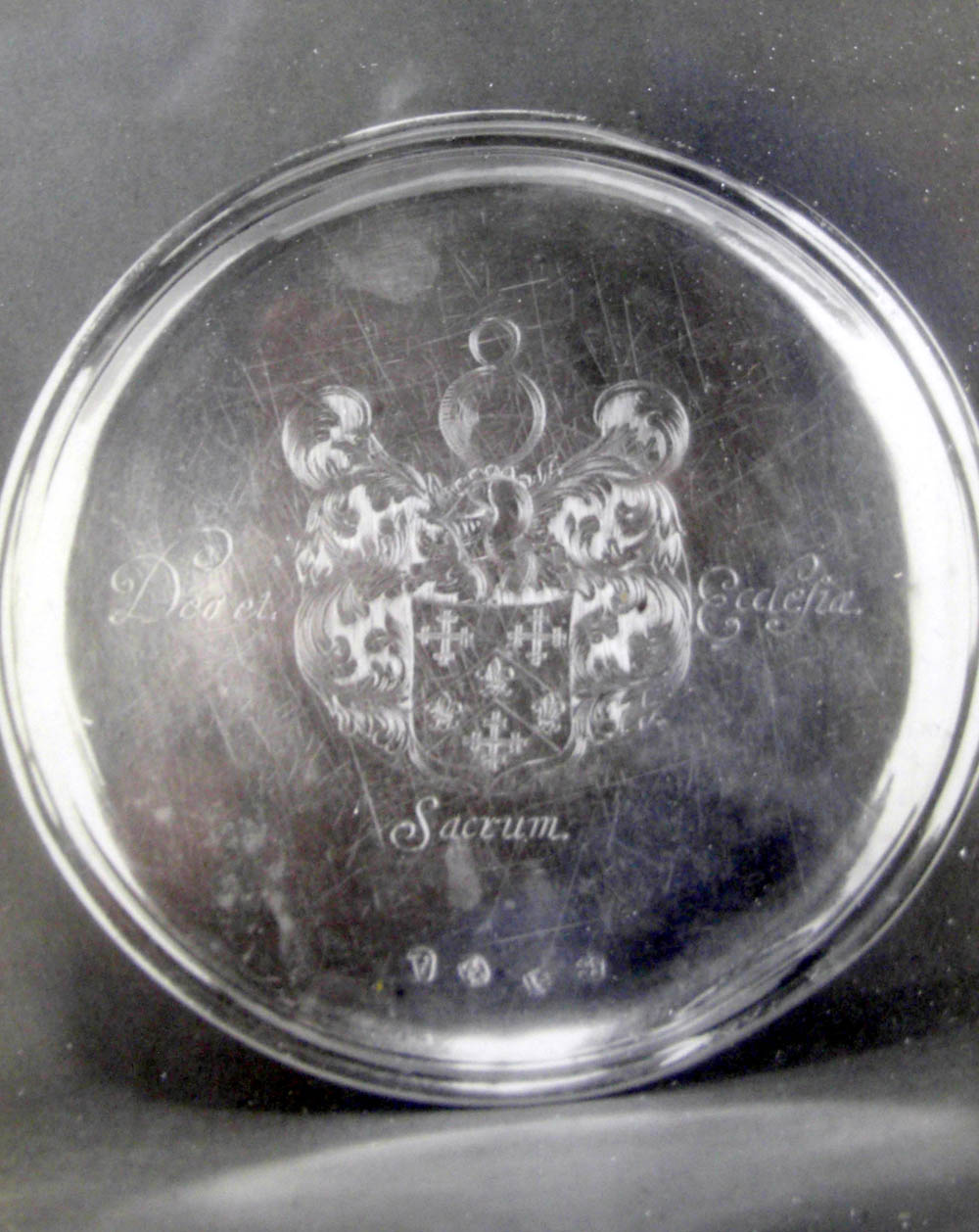Click on images or Charmouth Home to return back.

After many centuries of absentee landlords the village was at last to have a true Lord of the Manor in the shape of William Ellesdon. He was to purchase Charmouth from Sir John Pole in 1649 during the English Civil War. Both men were royalists and must have known each other well. His family had represented Lyme Regis both as Mayors and Members of Parliament since the early 16th century. There are many references to them in the town's records and Hutchins in his History of Dorset of 1774 provides a detailed family tree. In 1674 William Ellesdon, for the annual rent of 6d granted permission to the Mayor of Lyme Regis to take stone and sand from Charmouth beach. He must have been held in high regard, as he who almost succeeded in assisting in the escape of King Charles II to France after the battle of Worcester. In September 1651 Charles stayed overnight at a relations house in Monkton Wylde, which still stands today before going on to Charmouth where a boat would be waiting to take him to France and safety. Unfortunately the scheme backfired when the boat mans wife found out and the future king was to spend only one night at what is now the Abbots House in the Street. This event was to put Charmouth on the map forever more and our own William Ellesden in a long letter tells the story in vivid detail to Lord Clarendon. In reward for Captain Ellesdon`s services and loyalty, his Majesty, on his restoration visits the village and grants to him and two successive heirs a pension of £300 per annum, and presents him with a medal bearing the inscription "faithful to the horns of the Altar". The King also gives a beautiful miniature by Samuel Cooper of Captain Ellesden, together with a pair of silver candlesticks.
Williams father, Anthony had been Mayor of Lyme on three occasions and had purchased Newlands which had been part of Charmouth in 1649. Lyme Regis Church has a brass memorial plate to this gentleman and his family who lived for many years in Church Street in the town.
William had at least 4 children of whom the eldest was Anthony who was to live to 83, a great age in those days. As a result he was to outlive his children and his fortune was to go to his sister, Mary's family - the Henvills. This family had originated in Lower Looke, near Abbotsbury, but in 1669 they had bought Catherston Manor for £13,000 and would have been neighbours of the Ellesdons. Mary's husband Richard is recorded as High Sheriff of Dorset in 1723 and must have lived in the impressive Manor House, of which only a wing survives today alongside the present Building. Another son Thomas who died in 1730 provides us with a detailed Will which lists all his possessions and finances. They show us that he had considerable wealth and was able to lend his brother in law, Richard Henvill over a £1000. Another brother, Charles died in 1705 and is also buried in Charmouth with the rest of his family.
We are fortunate today to have two Impressive memorials to Anthony in the church which both record what a splendid man he was in spending some of his considerable fortune on remodelling the church in 1732. There was also a fine Silver plate with his coat of Arms at one time in the Church. He lived most of his life opposite in the Manor House and the Hearth Tax for 1663 shows it being owned by his father with 6 fireplaces.
When he died in 1737 he gave a substantial proportion of his wealth to his two nephews, Richard Ellesdon Henvill and Charles Henvill. It seems Charles was to stay in Charmouth and married Elizabeth Hodder and both were later buried here. His brother becomes Lord of the Manor, but it is probably Charles who lives in the Manor House. For Richard is often described as a Bristol Merchant and was very active in the Tobacco and Slave Trade. He was one of the agents who were responsible for outfitting the ships, making the arrangements for the supply and selling of slaves. He was a leading agent directing many slaving voyages. In 1744 he gives evidence to the Lords Commissioners for Trade and plantations that Bristol sent out 40 slave ships per year each with goods on board worth £4000. Another brother Robert lives at the time in St. Kitts in the West Indies.
Richard is only Lord of the Manor for seven years and it is his 17-year-old daughter, Benedicta, who is to inherit the village. Later in 1760 she is left Catherstone on the death of her uncle Charles Henville. At the age of 36 she marries the Rev. Joseph Durston, but they are to have no children and she is widowed by 1770. She is no doubt living in the village either at Charmouth or Catherstone Manor as her signature appears on documents of the time. They reveal that in 1771, Thomas Rickard, her Steward was leasing the property on the corner of the Street and Lower Sea Lane, currently known today as the Pharmacy from her for 6d per annum. Another lease for the same year shows her owning the building that was known as the “Wander Inn” on the Street in Charmouth. At a Court Leet held in 1770,in consideration of a good road being made in the lane leading to the sea at the cost and expense of the Parishioners, she renounced all the rights and titles to the lane, with all wrecks, stone, sand, and sea weed during her life time. Her Will shows her leaving her Manor of Charmouth to her distant cousin Richard Henvill. The Manor of Catherstone was left to his brother, Robert who was a Barrister on the Island of St. Kitts.
The Manor of Charmouth finally ends up being owned by a Merchant living with his family on the Island of St. Kitts in the West Indies. But it is only for four years as he is to die in 1788 and the Manor is put up for sale probably by Auction. The Ellesdons and their descendants owned the Village for over 130 years and Ellesdon Road is a reminder today of this important family.
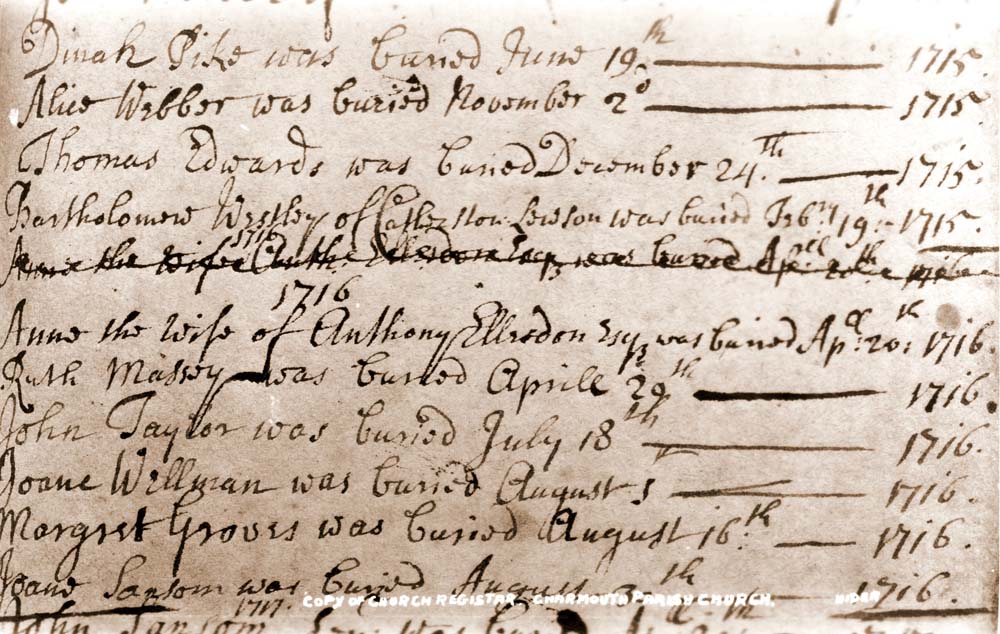
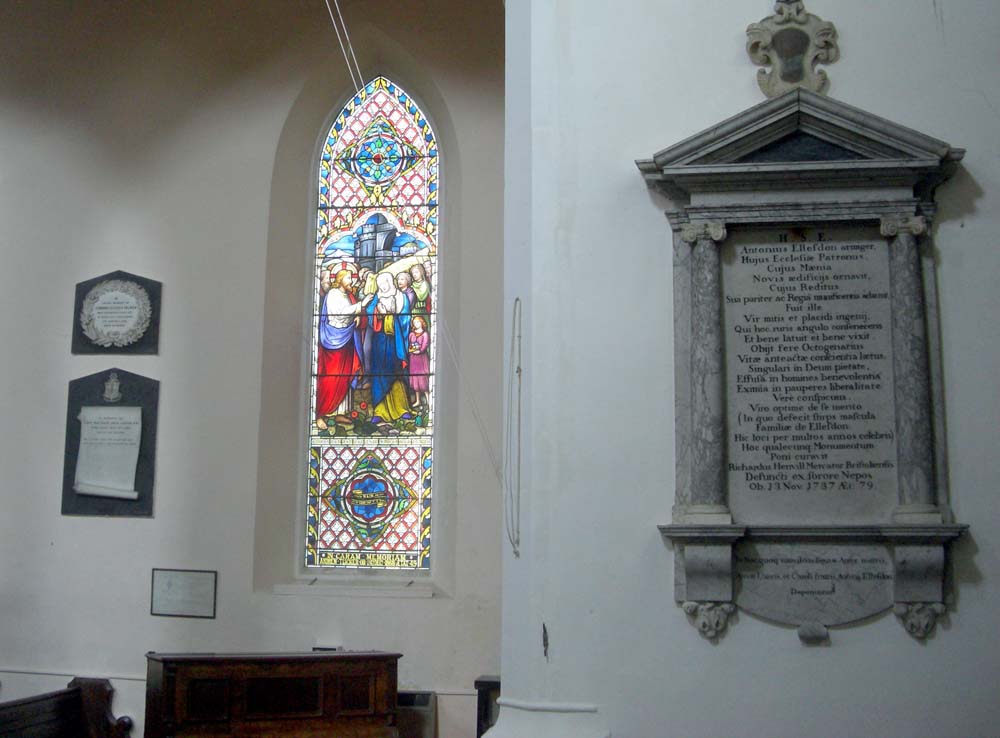
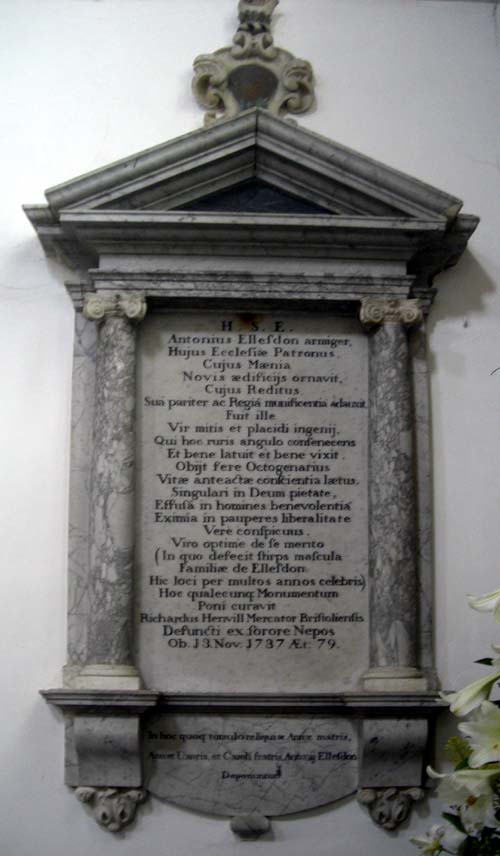
Anthony Ellesdon Esquire
Patron of this church
Whose Walls he embellished with new buildings
Whose revenues he increased with his own
`
almost princely munificence.
He was a gentleman of a quiet disposition
Who, growing old in this corner of the country,
lived a very retired life & lived well.
He died almost an Octogenarian.
Happy in the knowledge of his former active life.
By his unique affection towards God,
of Astounding generosity towards mankind,
extremely liberal towards the poor,
truly a remarkable man. A man very highly
deserving for his one sake ( in whom the
male issue of the Ellesdon family,
in this place for many years well known, ceases.
Richard Henvill, Merchant of Bristol, nephew by
the sister of the deceased, has caused this monument ,
such as it is, to be placed here.
He Died 13th November 1737, aged 79
In this Tomb are placed the remains of Anna,
his mother, Anna his wife & of Charles, brother of Anthony Ellesdon.
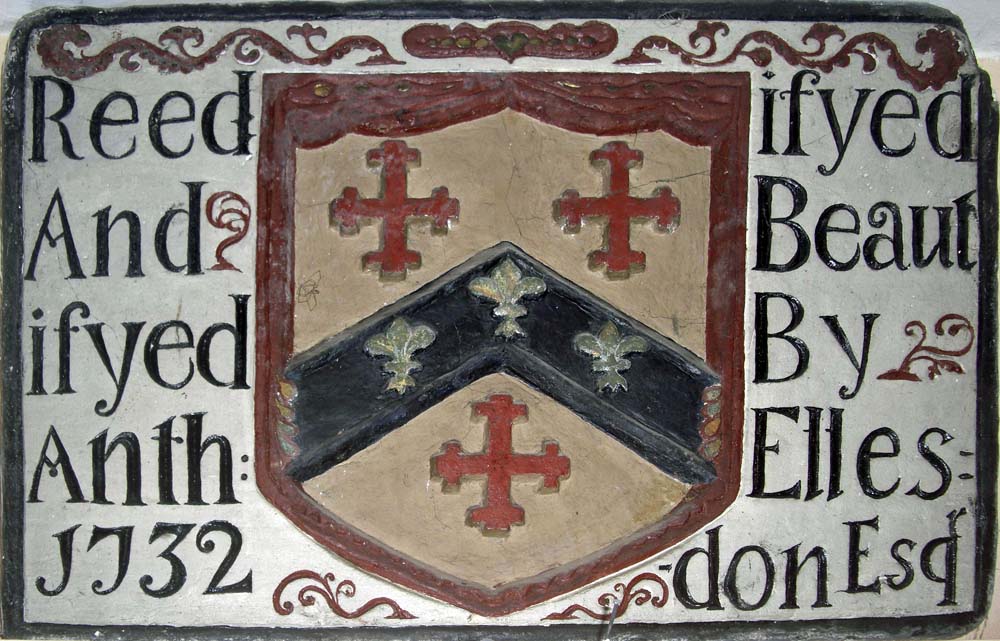
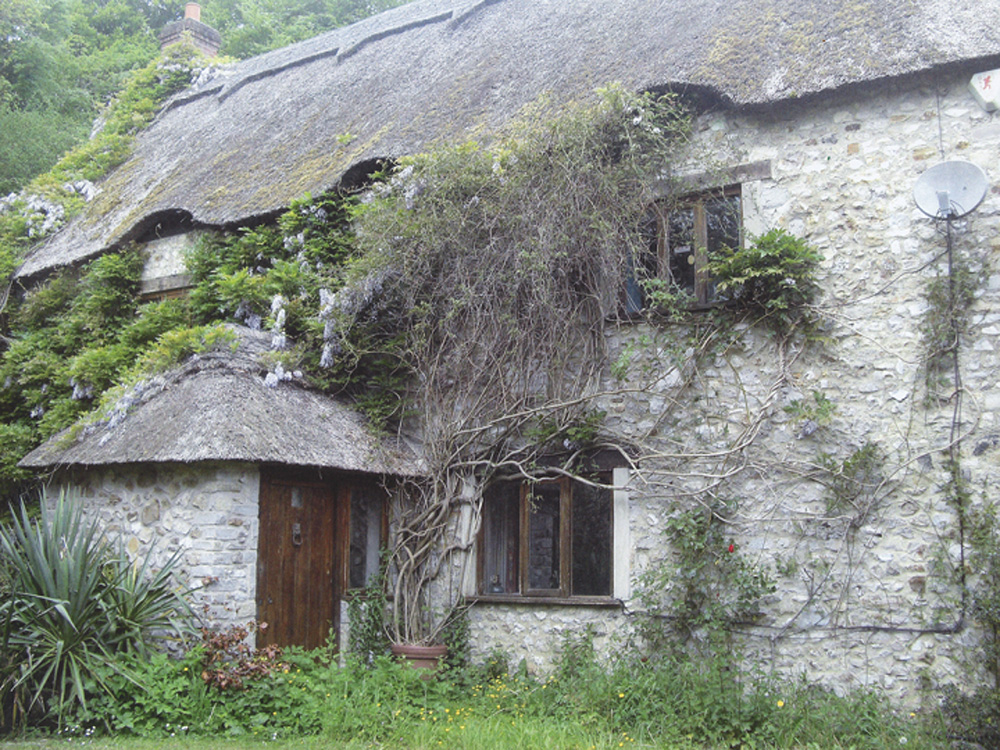
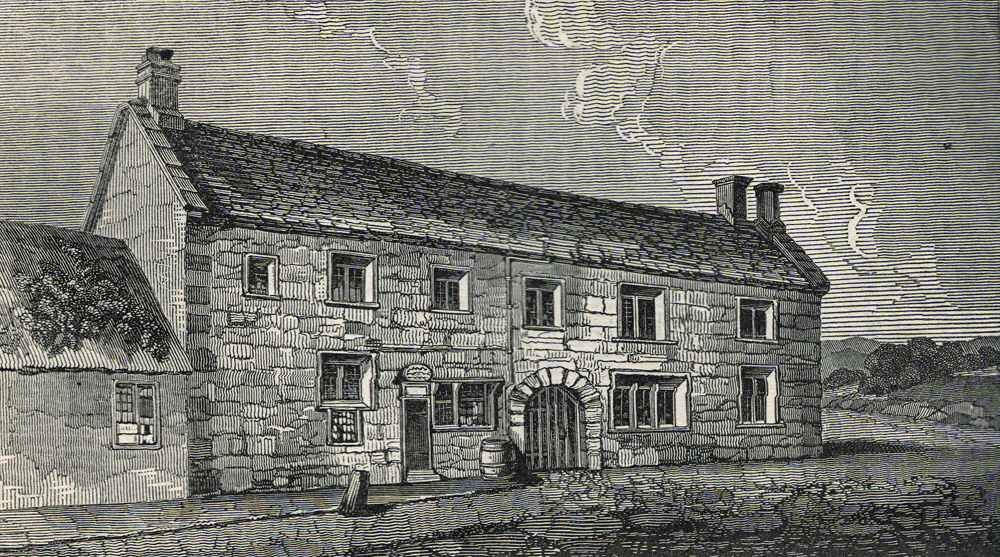


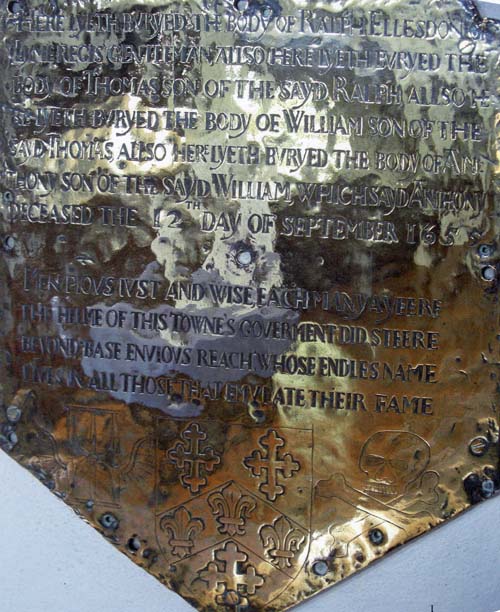
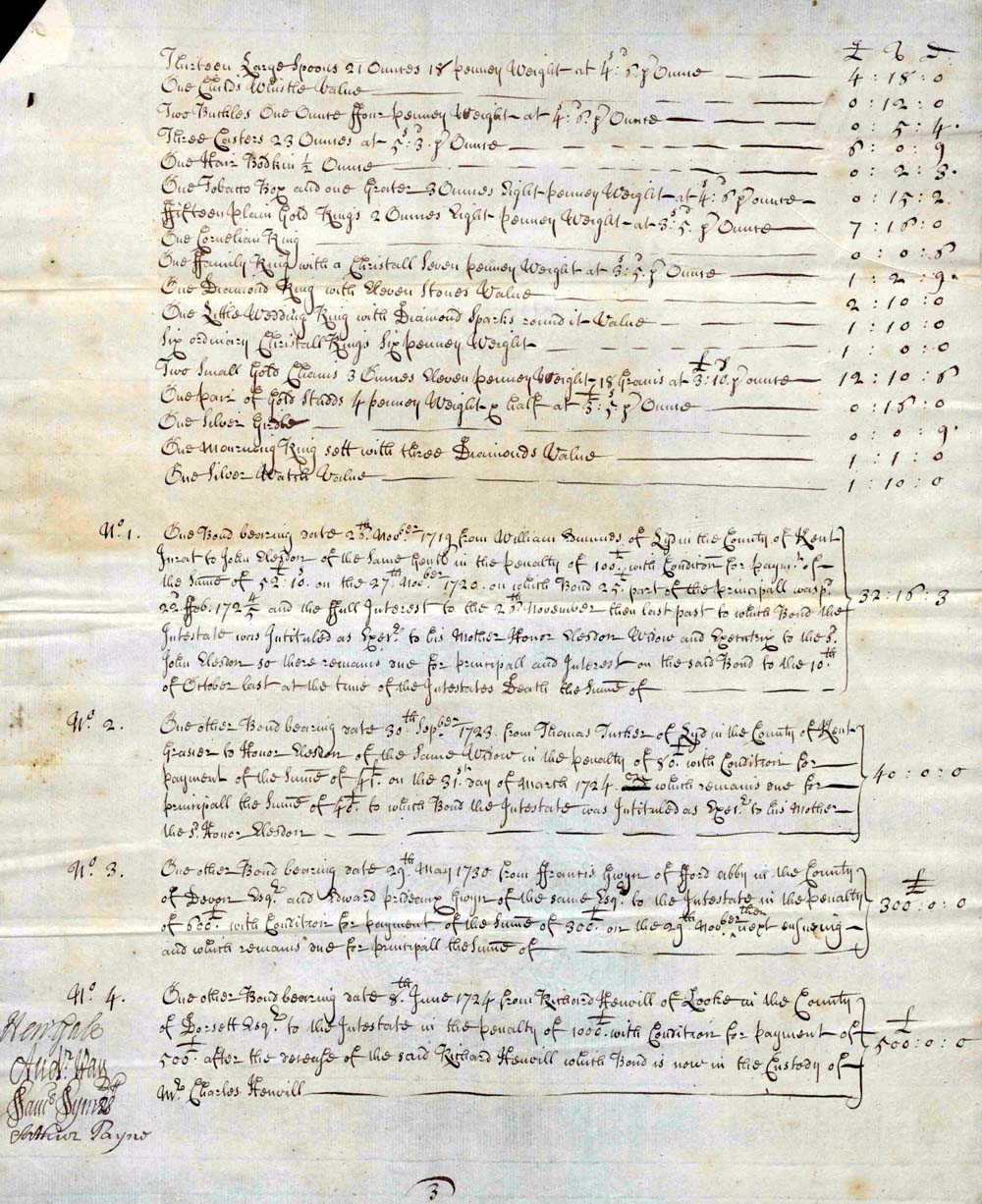
A page from Thomas Ellesdens comprehensive Will and Probate for 1730 which lists all his possessions and finances including a loan to his brother in law, Richard Henvill of £1000.
